Introduction and Importance of SEO-Optimized Website Design in the Digital Age

In today’s competitive world, merely having an online presence is not enough.
Your website needs to be seen, and this is where the concept of #SEO_optimized_website_design demonstrates its importance.
SEO, or Search Engine Optimization, is a set of techniques and strategies that helps your website achieve a higher ranking in Google or other search engine results.
The main goal of SEO-optimized website design is to attract organic and targeted traffic, which directly leads to increased visitors, sales, and brand credibility.
This process is not limited to the launch phase; rather, it is a continuous cycle of analysis, optimization, and updating.
A website not designed from the outset with an SEO approach may require extensive and costly revisions in the future, thus initial investment in this area is crucial.
This type of design helps search engines better understand your site’s content and display it to relevant users.
Understanding how a website can shine in search results is the first step for any online business.
Optimizing for search engines does not just mean placing keywords in the text; it includes a set of technical, content, and credibility factors.
Your website must be technically sound, valuable in terms of content, and strong in terms of credibility.
With SEO-optimized website design, you are actually building a strong foundation for the long-term growth and success of your business.
This allows you to gain an edge over competitors and reach your target audience.
The importance of this approach is such that today, no business can expect significant success in the digital space without paying attention to it.
This design directly guides potential customers towards you and offers a high return on investment.
Are you bothered by losing customers due to your online store’s outdated appearance or slow speed? RasaWeb’s expert team solves these problems with professional e-commerce website design!
✅ Increase customer trust and your brand’s credibility
✅ Stunning speed and excellent user experience
Get a free consultation with RasaWeb now ⚡
Basic SEO Principles in Website Architecture and Structure
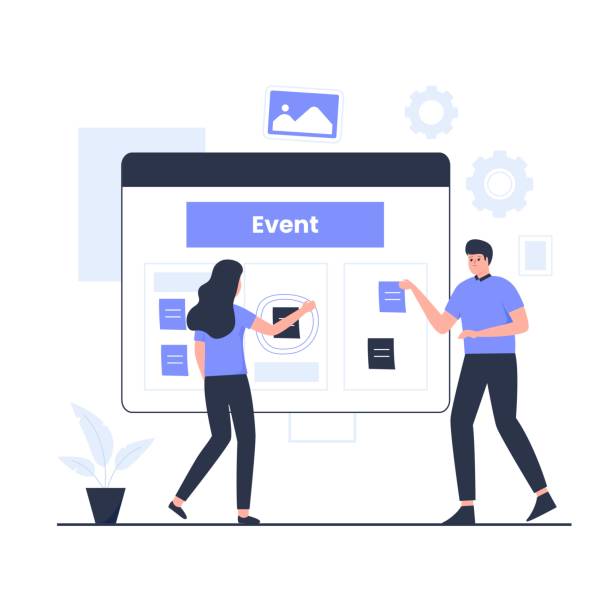
#Site_architecture and its structure are among the most important factors in SEO-optimized website design.
A logical and hierarchical website structure not only helps users easily navigate your site but also assists search engine crawlers (spiders) in understanding your content.
Mobile-Friendliness is a vital principle; Google prioritizes websites that provide a good user experience on mobile devices.
Site loading speed is also a decisive factor; the faster your site loads, the better the user experience and the higher the likelihood of a higher ranking.
Friendly URLs that include relevant keywords are not only more understandable for users but also help search engines understand the page’s topic.
Furthermore, using optimized Title Tags and Meta Descriptions for each page is very important.
These tags are the first thing users see in search results and can affect the Click-Through Rate (CTR).
To ensure SEO-optimized website design, special attention must also be paid to the internal linking structure.
Strong internal links help distribute “Link Equity” throughout the site and allow crawlers to discover all your important pages.
Image optimization using descriptive Alt Text is not only important for image SEO but also for accessibility.
Finally, having an updated robots.txt file and an XML sitemap are essential tools for guiding search engines in crawling and indexing your site.
By adhering to these principles, you establish a strong foundation for a comprehensive site optimization.
Keyword Research and Quality Content Production in SEO-Optimized Website Design

#Keyword_research is the backbone of any SEO strategy and plays a pivotal role in SEO-optimized website design.
Before producing any content, you must identify the words and phrases your target audience uses to search for your products or services.
This process involves analyzing search volume, competition, and user intent.
Producing quality and valuable content that answers user questions and meets their needs is of paramount importance.
Content should not be written solely for search engines; rather, it should be engaging and useful for humans.
This approach leads to an increase in user dwell time on the site and a decrease in bounce rate, both of which are positive signals for SEO.
After identifying keywords, you should use them naturally and logically within your content.
Avoid excessive repetition of keywords (Keyword Stuffing), which can harm your SEO.
Your content must be comprehensive, accurate, and trustworthy.
Using attractive headings, subheadings, lists, and relevant images can improve text readability.
Also, regular content updates not only show search engines that your site is active but also maintain its value for users.
In SEO-optimized website design, focusing on long-form content that delves deeply into a topic can establish you as an authority in that field.
Comparison of SEO-Optimized vs. Non-SEO-Optimized Content Features
| Feature | SEO-Optimized Content | Non-SEO-Optimized Content |
|---|---|---|
| Main Goal | Attracting organic traffic and addressing user needs | Simply informing or filling site space |
| Keyword Usage | Natural, strategic, and relevant to user intent | Random or excessive repetition (Keyword Stuffing) |
| Content Structure | Using headings, subheadings, lists, and short paragraphs | Long paragraphs without clear organization |
| Readability and User Experience | Very high, with focus on user and accessibility | Poor, may be tedious or incomprehensible |
| Search Result | Higher ranking, more organic traffic | Lower ranking or no appearance in results |
Technical Site Optimization for Search Engines and Its Importance
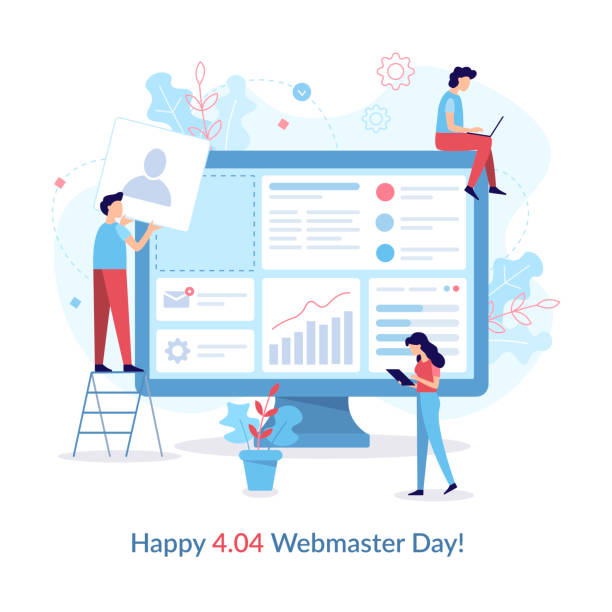
#Technical_optimization is an integral part of SEO-optimized website design that is often overlooked but has a profound impact on site performance in search engines.
This section involves ensuring that search engine crawlers can easily crawl and index your site.
Issues such as 404 errors, improper redirects, and duplicate content can harm your SEO ranking and must be identified and resolved quickly.
Correct use of Canonical Tags for managing duplicate content and Noindex Tags to prevent unimportant pages from being indexed are among the important technical measures.
The Robots.txt file and XML sitemap are two key tools in this regard.
Robots.txt tells search engines which parts of your site should not be crawled, while the XML sitemap provides search engines with a list of all important pages on your site for better indexing.
Implementing Structured Data or Schema Markup also helps search engines better understand your content and display it in richer forms (Rich Snippets) in search results.
This can significantly increase the click-through rate.
Regular monitoring of the site’s technical status through tools like Google Search Console is essential to ensure the health of your website’s technical SEO and maintain an SEO-optimized website design.
This section ensures that all your content and link-building efforts bear fruit.
Did you know that poor online store design can drive away up to 70% of your potential customers? RasaWeb revolutionizes your sales with professional and user-friendly e-commerce website designs.
✅ Significant increase in sales and revenue
✅ Full optimization for search engines and mobile
⚡ [Get Free Consultation from RasaWeb]
The Role of User Experience (UX) in Site Optimization for Search Engines

#User_Experience (UX) is no longer a secondary factor in SEO; it has become one of the most important pillars of SEO-optimized website design.
Google and other search engines are increasingly focusing on user behavioral signals such as bounce rate, dwell time, and content interaction.
An excellent user experience means your website is fast, easy to navigate, and has useful and engaging content.
Responsive Design, which displays your website well on any device, is not only a UX requirement but also vital for mobile SEO.
Simple and clear navigation is one of the key aspects of UX that helps users quickly find what they are looking for.
This includes clear menus, logical internal links, and the use of Breadcrumbs.
Furthermore, page loading speed, as mentioned earlier, directly impacts UX; today’s users expect websites to load instantly.
Attractive visual design, readable fonts, and correct use of whitespace also contribute to improving the user experience.
Finally, site interactivity through easy contact forms, clear Call-to-Action (CTA) buttons, and social sharing options helps increase user engagement and send positive signals to search engines.
This focus on UX not only leads to an SEO-optimized website design but also increases customer loyalty.
The Importance of Link Building and Domain Authority in SEO
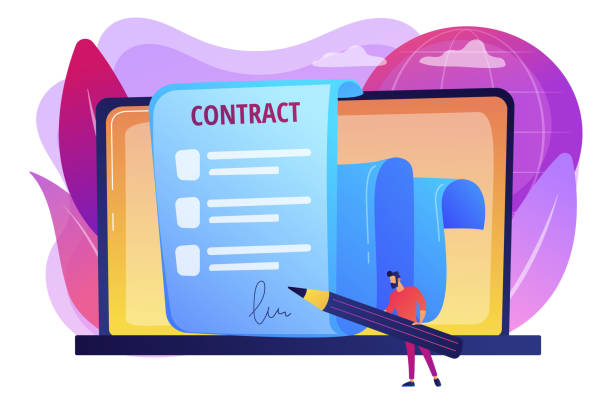
#Link_building and acquiring quality backlinks is one of the most powerful strategies in SEO-optimized website design.
Backlinks are links from other websites to your site and act as a “vote of confidence” from the perspective of search engines.
The greater the number and quality of your backlinks, the higher your Domain Authority will be, and the higher the likelihood of a better ranking in search results.
However, the important point is the quality of the links, not their quantity.
Links from reputable websites, relevant to your industry, and with high traffic, have much greater value than low-quality and spammy links.
There are various methods for link building, including producing valuable content that naturally attracts links, reaching out to other websites and requesting links, broken link building, and using reputable industry directories.
In addition to external links, internal linking also plays a vital role in distributing link equity throughout the site and improving user navigation.
A strong and continuous link-building strategy helps your site be recognized as an authority in its field, and this authority directly contributes to SEO-optimized website design and its ranking improvement.
This process is time-consuming but yields long-term and sustainable results.
Essential Tools for Website SEO Analysis and Monitoring

#SEO_tools play a vital role in monitoring, analyzing, and continuously improving the performance of an SEO-optimized website design.
Without these tools, it would be very difficult to diagnose a site’s strengths and weaknesses and make data-driven decisions.
Google Search Console (GSC) is a free and essential tool from Google that provides valuable information about how Google sees your site, including search performance, crawl errors, index status, and backlinks.
Google Analytics (GA) is another free tool that provides deep insights into user behavior on your site, including visitor count, visit duration, bounce rate, and navigation paths.
In addition to these free tools, there are also paid and more advanced tools such as Semrush, Ahrefs, and Moz, which offer broader capabilities in keyword research, competitor analysis, backlink monitoring, and technical site health checks.
These tools can help you identify new opportunities for growth, uncover technical issues, and track your SEO progress.
Regular use of these tools and proper interpretation of their data allows you to optimize your SEO strategies and thereby ensure the performance of an SEO-optimized website design.
Continuous monitoring is an integral part of maintaining superiority in the competitive online space and helps you always stay one step ahead.
Comparison of Key Features of SEO Analysis Tools
| Tool | Key Features | Access Type | Suitable For |
|---|---|---|---|
| Google Search Console | Search performance, crawl errors, index status, backlinks | Free | Site owners, SEO specialists for site health checks |
| Google Analytics | User behavior, traffic sources, conversion rate, demographics | Free | Marketers, SEO specialists for user behavior analysis |
| Semrush | Keyword research, competitor analysis, backlink monitoring, technical SEO | Paid (limited free version) | Digital marketing agencies, large businesses |
| Ahrefs | Strong in backlink analysis, keyword research, content analysis | Paid | SEO specialists, professional bloggers |
| Moz Pro | Rank tracking, site health check, keyword research, domain authority | Paid (limited free version) | Small and medium businesses, SEO specialists |
The Impact of Google Algorithm Updates on SEO-Optimized Website Design
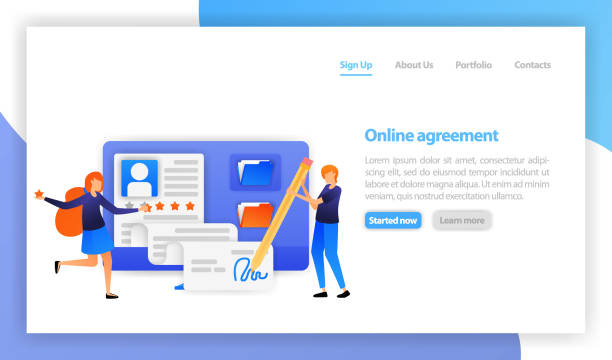
The #Google_algorithm is constantly changing and evolving, and these updates directly impact SEO-optimized website design strategies.
Google continuously updates its algorithms to provide the best and most relevant results to users.
These updates can range from minor changes to Core Updates that have widespread effects on site rankings.
Awareness of these changes and adapting to them is vital for maintaining SEO ranking.
For example, updates like Panda focused on content quality, Penguin on link quality, and Hummingbird on understanding the semantic meaning of searches.
The latest updates usually emphasize User Experience (UX), site speed (Core Web Vitals), and the importance of helpful and human-centric content (Helpful Content Update).
This means that today’s SEO-optimized website design must go beyond keywords and backlinks and comprehensively address user needs and expectations.
To succeed in this dynamic environment, SEO specialists and website designers must constantly learn and implement the latest Google guidelines and best practices.
Ignoring these changes can lead to a drastic decrease in organic traffic and loss of competitive position.
In fact, continuous optimization and flexibility in the face of algorithm changes are the key to stability in search results.
Are you tired of your company’s website not being seen as it deserves and losing potential customers? RasaWeb will solve this problem forever with professional and effective website design!
✅ Increase brand credibility and gain customer trust
✅ Attract targeted sales leads
⚡ Contact us now for a free consultation!
Common Mistakes in Website Design and SEO-Driven Solutions
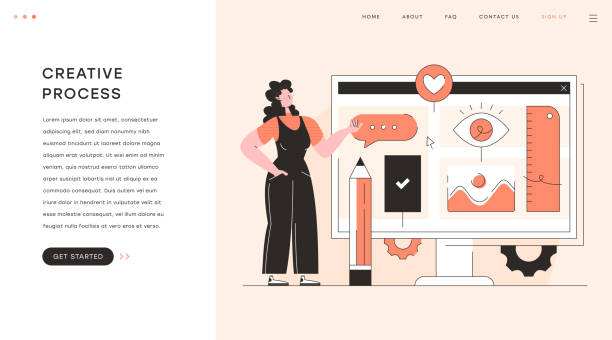
On the path to #SEO_optimized_website_design, there are common mistakes that can render your efforts fruitless.
One of the biggest mistakes is ignoring keyword research at the beginning of the process.
Without this step, you might create content for phrases no one searches for.
Another mistake is focusing too much on the quantity rather than the quality of backlinks; spammy and low-quality links can harm your SEO instead of helping it.
Additionally, neglecting site loading speed and not optimizing for mobile can lead to losing a large portion of your audience and receiving negative signals from search engines.
Duplicate or low-value content is another major issue that can be penalized by Google.
Ensure that every page on your site offers unique and valuable content.
Failure to use optimized title tags and meta descriptions, or using the same ones for different pages, misses out on significant opportunities to attract clicks.
Finally, ignoring User Experience (UX) and complex navigation can lead to high bounce rates and a decrease in SEO ranking.
To avoid these mistakes, it is necessary to adopt a comprehensive and all-encompassing approach to SEO-optimized website design that covers all technical, content, and credibility aspects.
By being aware of these mistakes and implementing SEO-driven solutions, you can harness your site’s full potential.
The Future of SEO-Optimized Website Design and Upcoming Trends
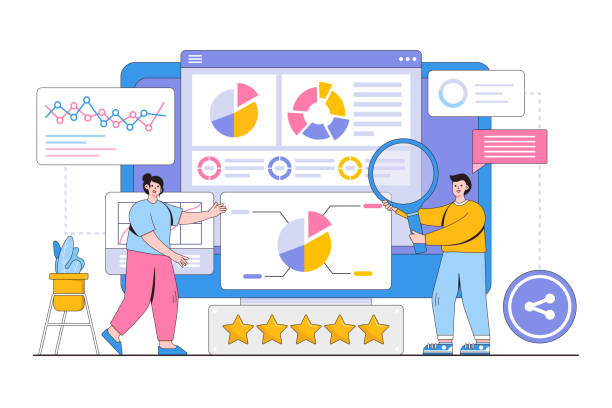
The #future_of_SEO is rapidly changing, and predicting upcoming trends is crucial for maintaining a dynamic and effective SEO-optimized website design.
One of the most important upcoming trends is Voice Search.
With the increasing use of voice assistants like Siri, Google Assistant, and Alexa, optimizing content to answer users’ verbal and more natural questions is becoming increasingly important.
This requires focusing on long-tail keywords and Q&A content.
Artificial Intelligence (AI) and machine learning will also play a more prominent role in search engine algorithms.
Zero SERP or Featured Snippets will also continue to be highly important; gaining these positions can drive significant traffic to your site, even without the user needing to click on a link.
Optimizing for Inclusive UX and accessibility for all users, including individuals with disabilities, will also become a standard.
Finally, the focus on EEAT (Expertise, Experience, Authoritativeness, Trustworthiness) as key factors in Google’s evaluation of content and website quality will become even more prominent.
This means that SEO-optimized website design in the future will require truly high-quality and specialized content from trustworthy sources to remain competitive.
Frequently Asked Questions
| Question | Answer |
|---|---|
| What is SEO-optimized website design? | SEO-optimized website design refers to designing and coding a website that is technically, content-wise, and structurally optimized so that search engines can easily crawl, index, and assign a higher ranking to it in search results. |
| Why is SEO-optimized website design important? | Its importance lies in increasing website visibility in search engine results (like Google), attracting more organic traffic, improving user experience, and ultimately increasing conversion rates (sales or desired actions). |
| What are the most important technical SEO factors in website design? | High loading speed, responsiveness (Mobile-Friendly), proper URL structure, use of SSL certificate (HTTPS), XML sitemap, and robots.txt file. |
| How does Responsive Design affect SEO? | Since the majority of searches are done via mobile, Google prioritizes responsive sites. Responsive design improves user experience and reduces bounce rate, both of which help SEO. |
| How does site loading speed affect SEO? | Loading speed is an important ranking factor for Google. Slow sites lead to a poor user experience, increased bounce rates, and lower rankings in search results. |
| What is the role of URL structure in SEO? | Short, readable URLs that include relevant keywords help both users and search engines better understand the page’s topic, which positively impacts SEO. |
| What is the importance of using Title Tags and Meta Descriptions in SEO design? | These tags provide information about the page’s content to search engines and users. Optimizing them with appropriate keywords increases click-through rates (CTR) and improves content understanding by search bots. |
| What is the importance of Image Optimization in SEO? | Reducing image size to increase site speed, using descriptive Alt Text (including keywords) to describe images to search engines, and increasing the chance of appearing in Google Image Search. |
| How does Internal Linking help SEO? | Internal linking helps search engines better understand the site structure, distributes authority (PageRank) throughout the site, and directs users to relevant pages, which improves user experience and reduces bounce rate. |
| What is the connection between User Experience (UX) and SEO? | Google values websites that provide a good user experience. Attractive visual design, easy navigation, readable content, and high speed all contribute to improving UX, which in turn leads to lower bounce rates, increased time on site, and positive signals to search engines. |
And other services of RasaWeb Advertising Agency in the field of advertising
Smart Website Development: A fast and efficient solution for increasing website traffic with a focus on attractive UI design.
Smart Social Media: A novel service for increasing sales through custom programming.
Smart Direct Marketing: Transform digital branding with the help of an SEO-driven content strategy.
Smart Custom Software: Revolutionize online growth by optimizing key pages.
Smart Social Media: A combination of creativity and technology to increase click-through rates through precise audience targeting.
And over hundreds of other services in the field of internet advertising, advertising consultation, and organizational solutions
Internet Advertising | Advertising Strategy | Advertorial
Sources
- SEO-optimized website design guide on Virgul
- SEO-driven website design tips from Mizbanfa
- SEO-optimized site architecture on Rastar
- Comprehensive SEO guide from SarvHost
? For your business to soar in the digital world, RasaWeb Afarin, with its comprehensive and specialized services including custom website design, SEO, and content marketing, paves your growth path. With us, experience a powerful and targeted online presence.
📍 Tehran, Mirdamad Street, next to Bank Markazi, Kazerun Jonoubi Alley, Ramin Alley, No. 6



